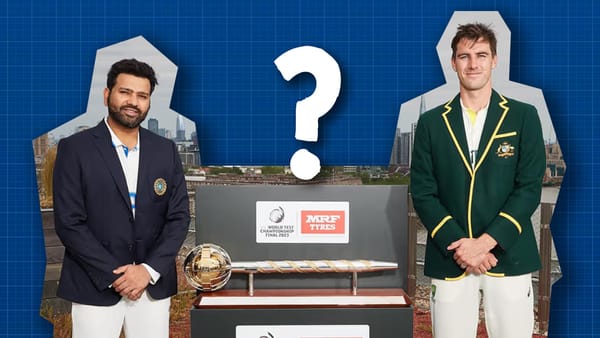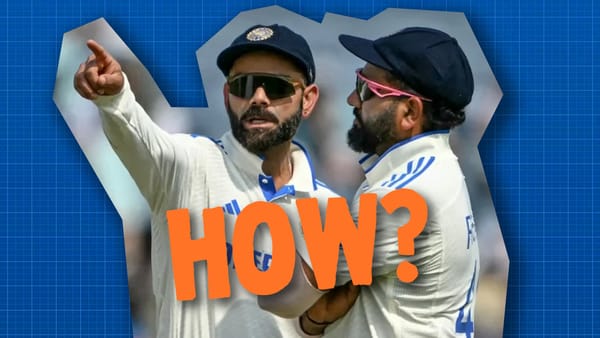Rise of the openers
International T20 teams pick their best batsmen, and that almost always means openers.

England and Australia just played a T20 series. England used a second XI, and Australia were trying to work out how to make things work while being rusty. It's a year out from the next World T20, which is scheduled in India and therefore making the entire series even less important.
So I'd love to talk about the fact that Australia keeps picking all rounders like Glenn Maxwell, Marcus Stoinis and Mitch Marsh and then not bowling them. But, I am not sure how much all that matters now, or really at all, as the next World T20 is more theoretical than realistic.
But there was a trend I couldn't stop thinking about from this series. Here is the list of everyone who made a run in it.

On this list, we can cross out all the bowlers because they're not important. And there are some all-rounders like Agar and the Currans, we'll call them bowling all-rounders and leave them down the order. That means we are left with 16 batsmen on this list.

The red marks denote those who are openers most of the time, or just better when they open. I won't make you count; that's 12 of the 16. That means that 75% of the batsmen in this series are there because they open.
And there is a reason for this. These batsmen as a group have faced 21960 balls opening the batting. And 23860 when not opening. When at the top they average 37 and strike at 150. When not, 28 at 141. There is a reason for this of course. Opening is the best place to bat - as long as you can handle a couple of overs with the new ball.
Joe Harris wrote about this two years back when looking at Rohit Sharma. But in his piece, he looks at the fact that almost every batsman is better on traditional or advanced metrics when they open. Even Glenn Maxwell - who for my list is one of the few non-openers - is better when he opens according to Joe.
So if you're convinced that opening is the best place to bat, it makes sense that they all have the best figures. And ofcourse that leads to them all being picked for the national side. There are two reasons for that, one is selectors still think in an old school way, and they trust domestic batsmen who bat high up. And opening looks better for the stats, it means you'll dominate the run lists, and often the strike rates as well. So they get picked, and that's why teams and squads end up full of openers.
So what's the problem, if cream rises to the top, which in T20 it does, these are the best batsmen. But, opening the batting is one skill, the rest of the innings is completely different. First drop has elements of being an opener but also having to come in towards the back end of the powerplay. Batting at four is the hardest spot. Five can be a place where you need to instantly score or rebuild in the middle. Six is a hitters spot with occasional middle overs responsibility. All these require either facing the older ball, or coming in when the powerplay fields are over. That's different to being an opener and seeing the ball get softer and being set when the field is out.
It's not that some openers won't be suited to these positions, it's that they haven't had time to learn them, and were picked because of a vastly different role.
It's not that batting in the middle is an entirely specialist position. But to win a World Cup you need your players suited to their roles, or at least used to them. Having a guy who has never batted at five regularly is not ideal.
Look at Dawid Malan, this week he went to number one in the world on the T20I rankings. And clearly, he's not the world's best T20 player, but he's scored a lot for England of recent times. But if everyone was available for a major tournament right now, England's top order would look something like this:
Jonny Bairstow
Jason Roy
Ben Stokes
Jos Buttler
Eoin Morgan
Dawid Malan
Now Malan is famous for being a slow starter. He usually is ten off ten balls. You can't do that at six, the average number six batsmen faces 11.5 balls per innings. What made Malan successful, opening the batting and being ten off ten, will not work in that position. Now, perhaps he can change. But it's more likely he won't be able to ever pull off that position regularly. But he also looks like he's in England's best six batsmen.
And usually that is where the problem comes, they are all in the best six batsmen, but not at each position. The skills are so different I do wonder if it's like picking a team of strikers in football. And then expecting some of them to work out the wings and midfield. Because franchise cricket is so strong, if you're a regular international player, you'll get to play in many leagues in your preferred position. This is what happens in football, team's pick players and then build their side around them, which you can do at club level. But that causes problems for international teams as they have to fit a playing style around what is available to them. So some player dominates for club in a role he is genetically bred to fit, but struggle in international football as that formation won't work.
Australia have shown this a lot over the last few years, placing batsmen in many weird spots. Aaron Finch has been a middle-order player for them, David Warner at first drop, and at the moment they have tried Alex Carey at six or seven. In this series, Carey batted in the middle again, but then he was replaced by Matthew Wade who came in to open. Marcus Stoinis who really started tearing up T20 when opening, has had to bat in the middle or at three. When Josh Philippe first came through, I thought he looked incredible as a number six. For Australia, it would have been perfect if he stayed there. But he did so well that they moved him up the order and he opened. Now Australia needs their keeper to bat in the middle, and by the next World Cup he'll have spent two big bashes as an opener. There just isn't enough room for them all to bat where they want too, or where they are known to be good.
England is in the middle of their own puzzle with Jos Buttler, who is their best batsmen. So you want him to face the most amount of balls. But he's also one of the best middle-order players on earth, and they have other good opening options. And it's not just these two teams, but this happens right across international T20.
The West Indies are different. They have experienced and skilled middle order players. That makes them well-balanced in a way most teams only dream of. As for everyone else, come the World T20, poor old openers will try to learn to bat everywhere.
But what is the solution, if you choose the best domestic number six you're not picking one of the best six batsmen. So it means most teams will either pick an inferior batsman or a player who hasn't played the role much, or is not suited to it.
So a bunch of teams around the world have a year to work out how to take all their openers and convert them into functional T20 line ups. And I am sure if these openers fail, they can always find more.




